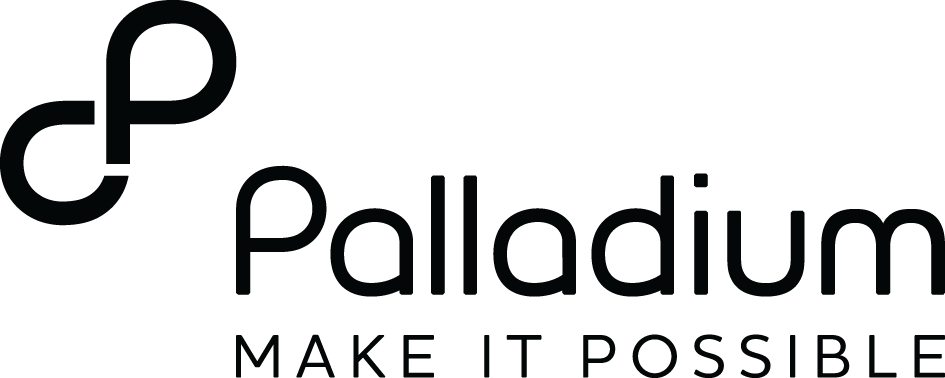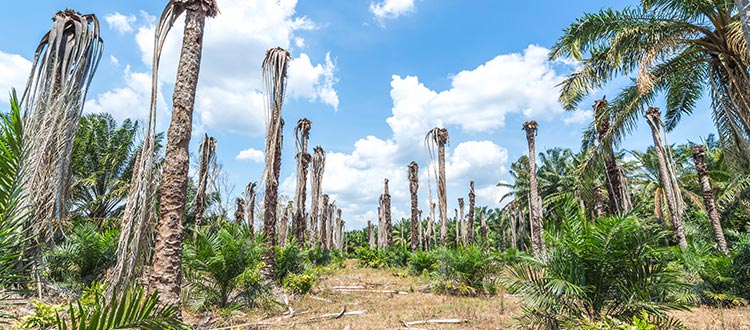Sustainable Palm Oil is Possible: Here’s How
Palladium’s Eduardo Tugendhat was keynote speaker at the recent Annual Congress of the Colombian Oil Palm Federation (Fedepalma). Here he shares his proposed alternative to destructive palm oil practices.
The Challenge
Palm oil is the most widely consumed vegetable oil in the world, but its rapid expansion has led to irreparable destruction of forests and habitats for some of our most endangered species. There has been a global push to make the palm oil industry more sustainable, and while there has been some progress, there’s still a long way to go.
When environmentalists first criticized the principal users of palm oil – major food and personal care companies – for the destruction of Southeast Asian rainforests, these companies could not say for certain where much of their oil originated. Opaque commodity markets that involved numerous intermediaries made traceability almost impossible. However, food industry giants such as Unilever, Nestle, and Procter and Gamble responded to the pressure by establishing the Roundtable on Sustainable Palm Oil (RSPO) in 2004 together with environmental groups and major palm oil producing companies. Many companies and European countries have committed to only purchasing palm oil that can be traced to land where no virgin forest has been destroyed to make available land for palm cultivation. RSPO and other organizations certify the producers and their supply chain systems.
Two Weak Links
A chain is only as strong as its weakest link, and the sustainable palm oil system has two weak links: market demand for sustainability and small scale farmers on the supply side. RSPO currently reports that only 19% of world palm oil, or about 12.2 million tons is certified. Despite the commitments of major companies, it seems that the demand for Certified Sustainable Palm Oil (CSPO) is even lower. Certification comes at a high cost to producers — many will want to see growing market demand, reflected in differentiated prices for certified oil, before making the investment in certification.
Certification has been most successful in reaching the largest processing mills and plantations. These highly visible companies have both the resources to implement traceability systems and the risk of losing very large customers or exposing themselves to negative publicity. However, RSPO estimates there are about 3 million smallholder farmers growing oil palm, and only about 90,000 are certified. In Indonesia, where it is expected that the smallholders will increase their share of production from 25%, their traditional slash and burn practices are a major contributor to rainforest destruction. The problem is that these extremely poor farmers have no incentive to participate in certifications schemes — the price for their product remains the same while the cost of participating is high. Basically, traceability of palm falls apart at the level of mills which purchase from intermediary traders and small farmers.
A Sustainable Solution
In a recent keynote presentation to the annual Congress of the Colombian Oil Palm Federation (Fedepalma), Palladium proposed an alternative inclusive growth approach to transforming the palm oil ecosystem. We argue that the current approach to sustainability is primarily driven by the desire of major food companies to minimize risk to their brands. Certification is not creating enough additional value within the palm oil ecosystem to incentivize change in practices, especially among smallholders. We believe that an inclusive growth model that creates many times more economic value for all actors in the system is genuinely sustainable and good business.
In Ecuador, an analysis of the oil palm ecosystem, conducted by Palladium, revealed that small and medium scale producers were either losing money or barely breaking even. At the same time, most mills and refineries operated below full capacity while the expansion potential of large farms was limited. By investing in improving the productivity of the independent farms, the total value of palm oil sales would increase by about 50% without any increase in land under cultivation. Most importantly, small and medium farmers would now have profit margins of 35% which translates into dramatically better livelihoods. In other words, everyone benefits, including end customers. Because the new approach to working with independent farmers involves direct relationships between mills and their suppliers, the resulting information provides complete transparency and traceability. End customers can see that not only was no forest destroyed to cultivate their oil, but that less land is being used for the same amount of oil and the communities are much better off.
How to Make it Possible
If this is such an obvious solution, why is it not happening? The answer is largely organizational. The solution requires the mills to proactively organize programs that bring together the technology, financing, and technical support that can double yields and enhance resilience to disease and climate change. This investment can be financed because it produces clear returns. The principal caveat is that we have also found that the minimum size for palm oil farmers to be economically viable is about 8-12 hectares of highly productive palm. The implication is that sustainability initiatives need to help farmers expand or transition to other activities.
Innovation in supply chains such as palm oil will largely come about through longer and more direct relationships between large companies and their suppliers, where they jointly invest in a step chain improvement in productivity. This is the only way to feed growing populations with less resources, while also improving the wellbeing of the poorest rural communities.
Contact Eduardo Tugendhat for further information.

